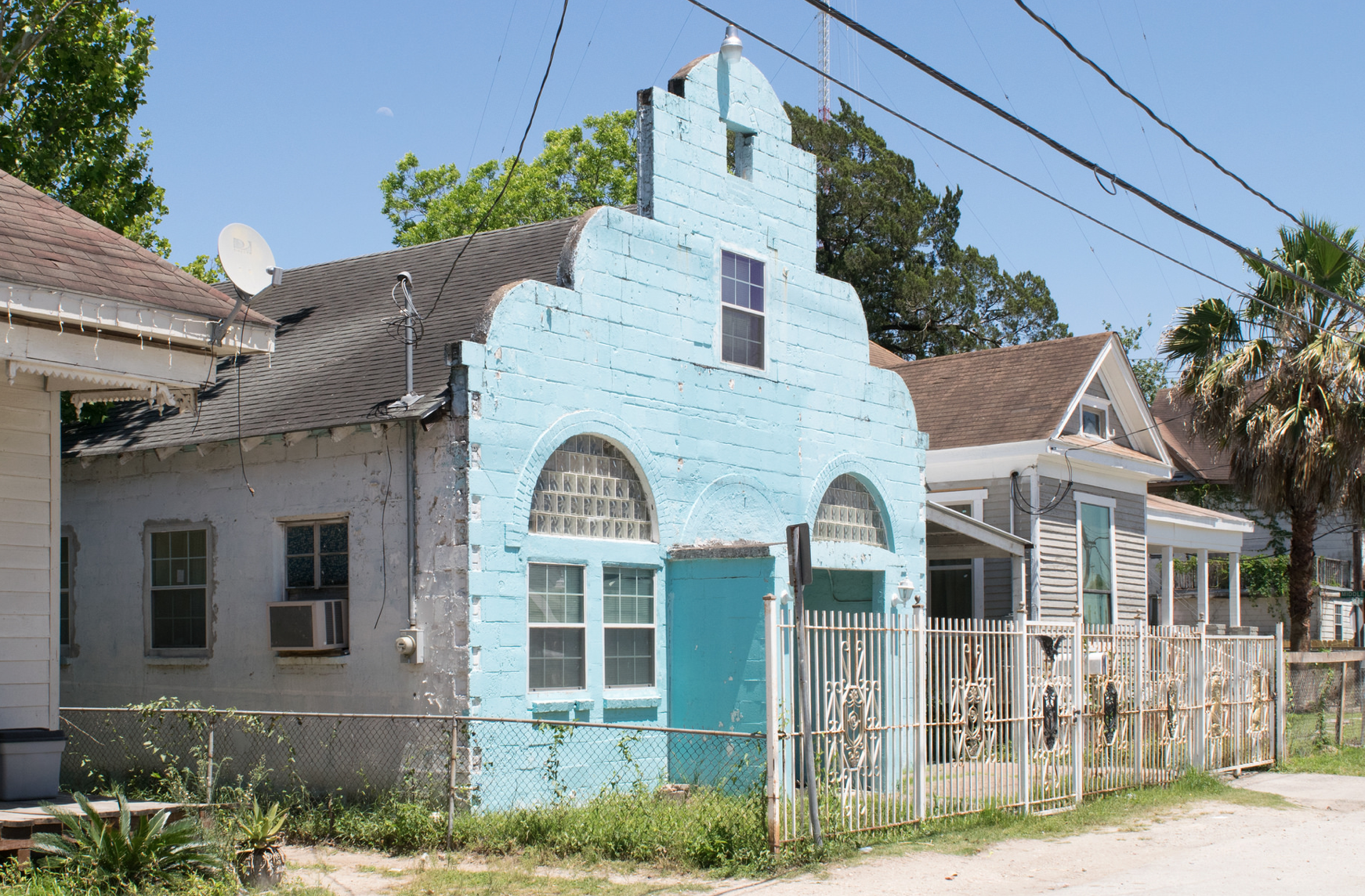The Complete Communities pilot program that may, along with pension reform, prove to be a significant part of Mayor Sylvester Turner's legacy has completed its draft plans for the five selected neighborhoods. After Hurricane Harvey delayed the process, the plans will be reviewed first by the Economic Development Council Thursday before heading to City Council for approval. The date for that vote has not yet been set but Thursday's meeting is partly to collect public input on the draft plans.
From the beginning the program, which was launched without any new sources of funding, has raised a lot of questions about how it will fulfill its many goals. And the draft plans only underscore those questions. Indeed, much of the work done during the planning process involved mapping existing community and city assets that could be funneled toward the array of neighborhood goals. From the outset, the city said it planned to take a supportive role in two of the neighborhoods and a more active role in the other three neighborhoods.
The program, which is meant to direct investment to long underserved neighborhoods, has also been a key part of the city's response to persistent fair housing complaints, from the federal government resolved in a recent settlement and from housing advocates who are now suing the federal housing department, amid concerns that Houston will not spend recovery money in line with fair housing goals.
The plans are packed with goals and projects, with lead organizations identified for each. Acres Home, for example, has 33 goals and 92 projects. Each report started with a similar set of goals to reduce illegal dumping and crime, combat rising costs and other goals. But the plans developed around specific themes in more detail.
Many of the plans' goals rely on community organizations and non-profits while others look to city departments and agencies, including the police and housing department. Still others require the involvement of bodies outside the city government, including the Houston Independent School District and Metro transit agency. Though no new funding announced at the time of the program's launch, the mayor did promise 60 percent of the city's federal housing funds as well as 60 percent of the housing funds from local tax increment reinvestment zones would be directed toward the five neighborhoods. Since the launch, the mayor has used other grants, like one from the National Endowment for the Arts, to help support the program.
The plans also provide insight into how the process unfolded differently in each neighborhood. In the Near Northside, for example, just five community leaders were involved in outreach and small group meetings, according to that neighborhood's plan, versus 74 in Second Ward.
Here's a look at some of the goals identified as the highest priority for each neighborhood.
Read the full draft plans here.
ACRES HOME
The area that is home to the mayor and one of the city's historically African American neighborhoods is also a bit of a patchwork of jurisdictions and development. Economy and jobs, housing and neighborhood character and infrastructure emerged as the highest priority areas.
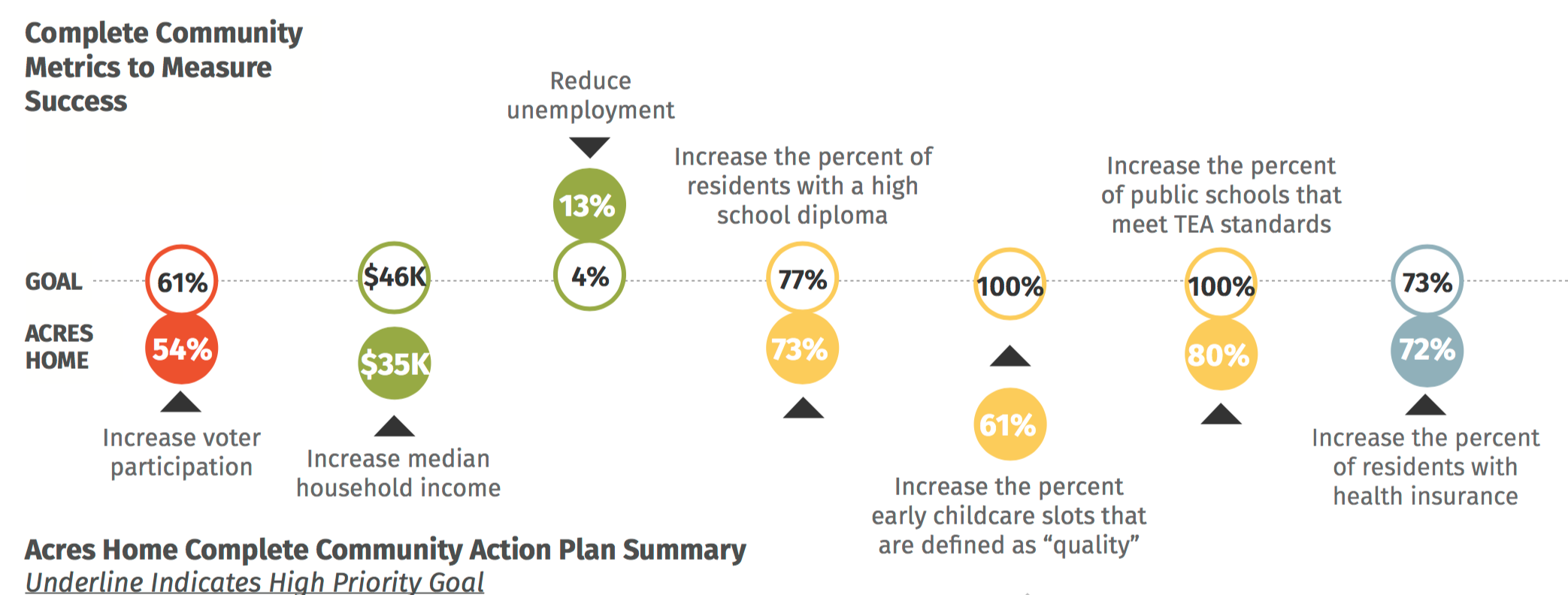
Source: City of Houston.
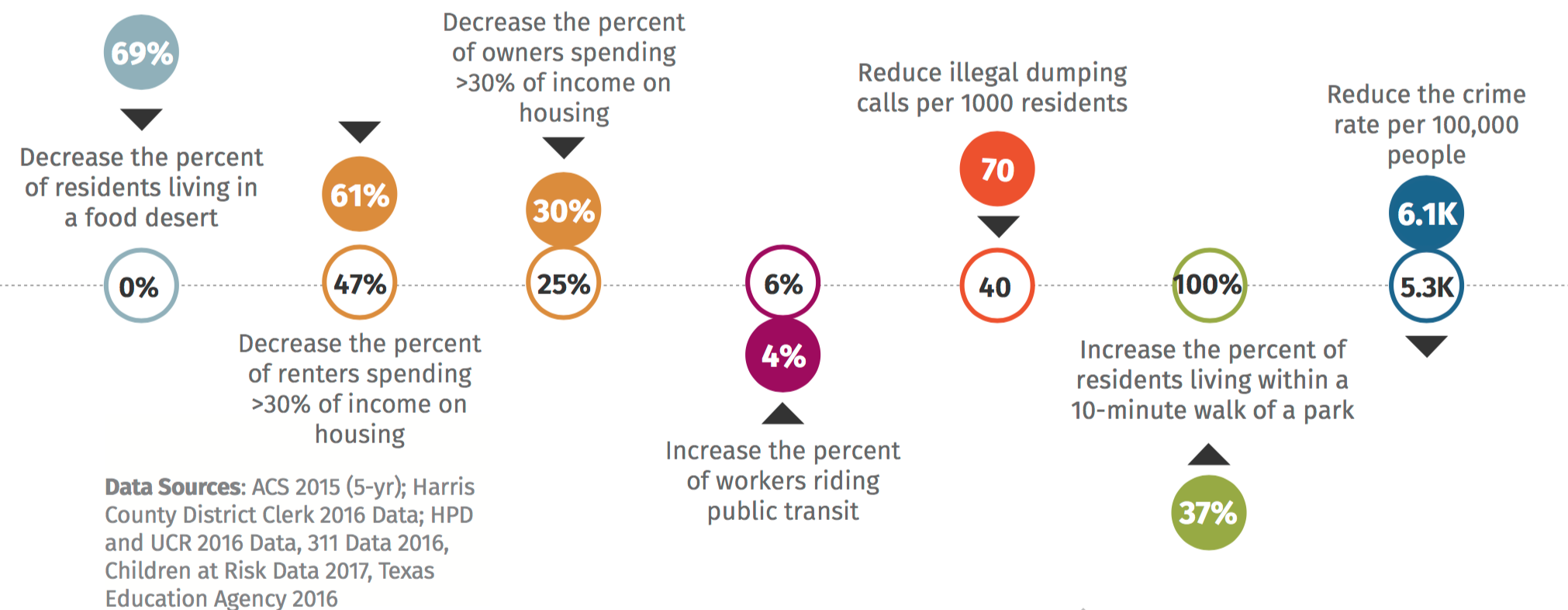
Source: City of Houston.
Jobs
In 2016, the neighborhood, where the mayor resides, had one local job for every four residents, according to the report, and the area had a noticeable lack of retail options. According to 2012 data cited in the report, there was one store for every 315 residents; 25 percent "less than the number of retail stores per person in Houston." Like other under-served areas, the neighborhood has more payday and checking cashing establishments than banks and had few grocery options.
To combat high unemployment and a lack of family wealth, the plan calls for the creation of a Workforce Solutions Center in partnership with the Gulf Coast Workforce Board and an Economic Development Hub to coordinate resources. It also seeks to bring more job training programs to the community and to expand loan programs as well as access existing youth employment efforts, like the city's historically underperforming summer jobs program. Separate from that is the Financial Empowerment Center, which aims to work on individual financial planning, education and referrals.
Some of the bigger goals: Add five new businesses by 2023. Open one new financial institution by 2023. Increase small business loans to the area from $16 million in 2015 to $20 million by 2023 and reduce the area's employment rate, which was at 13 percent in 2015, by half by 2023.
Housing
Here the neighborhood walks a tight rope, seeking to help repair old housing, build new housing, particularly around W. Montgomery and ensure the neighborhood remains affordable for existing residents. Though the community was historically one of homeowners, the number of people who own their own homes had been declining. With housing prices rising, the majority of renters there are considered cost-burdened, spending more than 30 percent of their income on housing. With a significant share of senior-headed households and more than one in ten senior citizens living below the poverty level, according to the report, home repair loan programs are critical to helping them maintain their homes and communities. But the report found that 72 percent of home improvement loans in 2016 were denied.
The plan's goals include avoiding the displacement of current residents, offering homebuyer classes, increasing access to home repair programs and demolishing or repairing vacant housing.
Some of the more specific goals: Add 100 single-family homes affordable to households earning less than $50,000 by 2023, a goal that seems well within reach with 135 lots currently owned by the city's Land Assemblage Redevelopment Authority, according to the report. Provide home repair services to 50 senior citizens by 2023.
Infrastructure
When the city didn't serve Acres Homes, the neighborhood did, by creating its own transit agency in the 1950s. Today, the area faces significant mobility and infrastructure challenges. On the west and east side of the neighborhoods, roads of homes sit inside the floodplain and homes outside the floodplain experienced flooding during Hurricane Harvey, underscoring a need for drainage flood mitigation improvements. The area also lacks sufficient sidewalks, bike lanes (there are none in the neighborhood) and street conditions. There's also an interesting note calling for the development of a plan for horse-riding trails, which would honor the area's unique character.
Just a few of the goals related to these challenges: Build 10 miles of new sidewalks around schools and transit and 7.5 miles of bike lanes by 2023. Complete 10 miles of street improvements by 2023, including with funding from the Capital Improvements Project budget.
Other goals for the neighborhood from the draft plan include attracting a new grocery store, ensuring all schools pass state requirements, ending illegal dumping and to create a town center.
GULFTON
The densest neighborhood in the city, Gulfton has a unique profile. More than half of the residents there are foreign-born and the area includes many of the city's refugee communities as well. Here, the key areas of focus were safety, parks and housing.
Safety

Source: City of Houston.
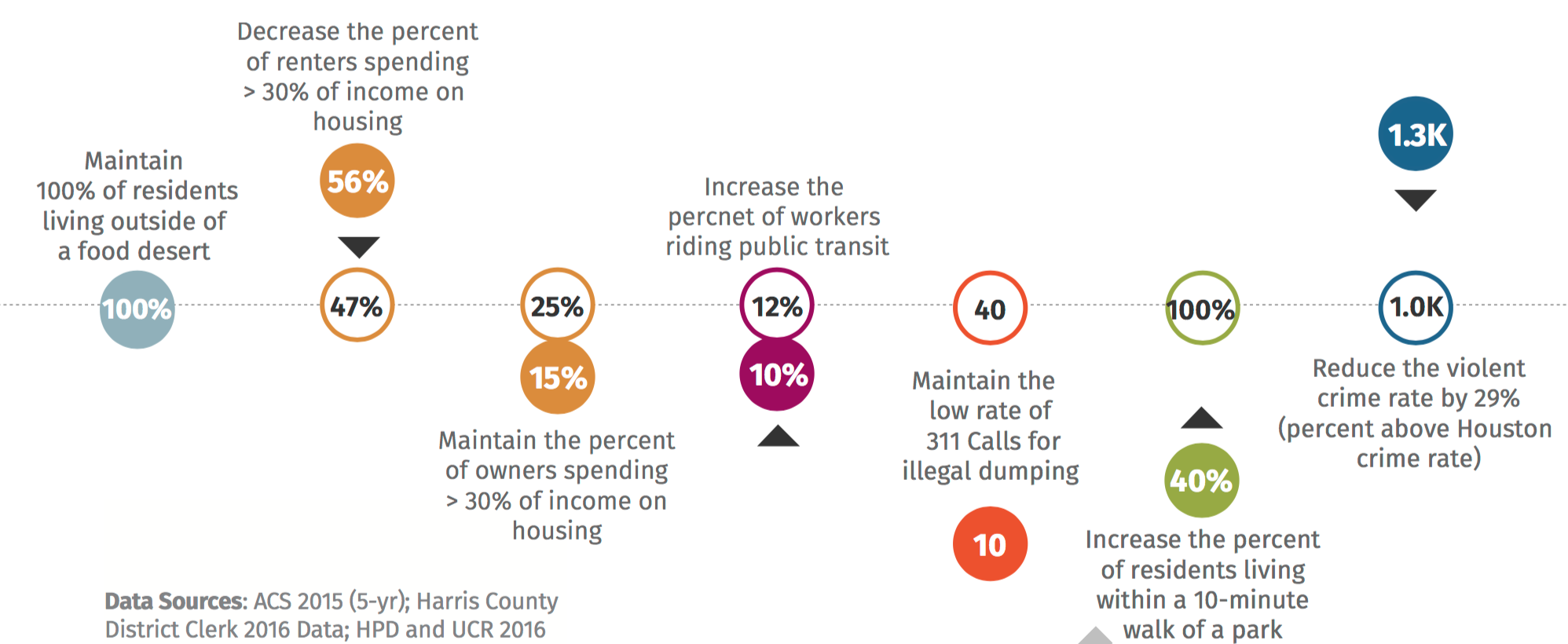
Source: City of Houston.
Safety
Though property crime was lower here than for the city, violent crime was 29 percent higher in 2016, according to the report. The plan calls for a response to gang activity and gun violence as well as creating better relationships between law enforcement and the area's diverse communities via multilingual outreach and other efforts.
Some of the specific aims: Cut violent crime by 25 percent by 2023.
Parks
Gulfton has just one public park, according to the report, and it's only walkable for less than half of the area's 47,000 residents. A community this size needs roughly 119 acres of park space but has only 33, according to the report. The plan calls not just for more parks but more greenery, in general, adding trees to streetscapes and other steps.
The specific goals? Increase the percentage of residents who are within a 10-minute walk of a park from 40 to 100 percent by 2023. Plant 100 new trees by 2023.
Housing
The overwhelming majority of Gulfton residents are renters and the area is home to 17,000 apartments with 10 or more units, according to data from 2015. Though the neighborhood's aging apartment stock keeps price relatively affordable, most of the residents there still struggle with cost burdens. The plan calls for new housing and pathways to homeownership for renters. The plan also outlines steps to improve the quality of existing apartment complexes as well as help renters, many of whom are recently arrived to the country, understand and protect their rights.
The specifics: Reduce habitability violations in multi-family housing by 50 percent by 2023. Offer one annual multilingual workshop on renter rights over the next five years. Build 300 new units of affordable housing.
NEAR NORTHSIDE
One of the two neighborhoods where the city aimed to take a supportive, secondary role in executing the Complete Communities program, Near Northside is a neighborhood in transition. The largely Hispanic community is served by the rail and close to downtown. There were a number of high priority areas here, including infrastructure, affordable housing and economic development.

Source: City of Houston.
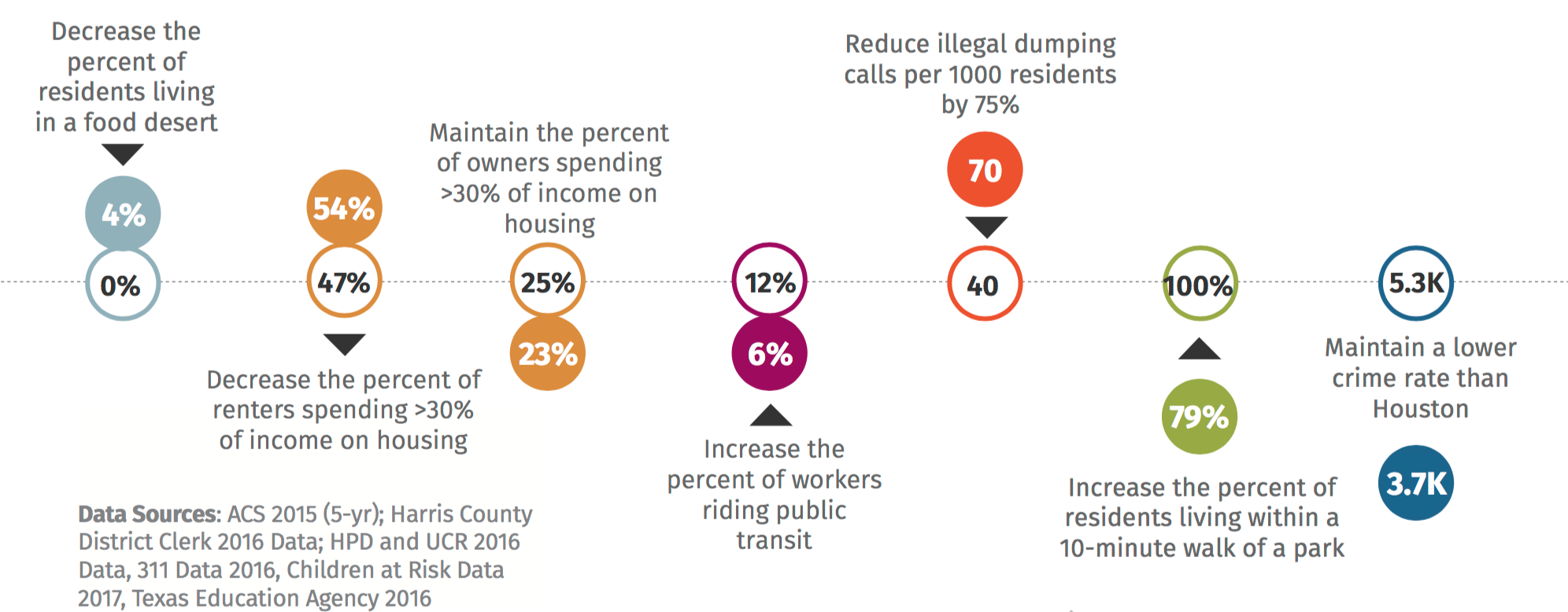
Source: City of Houston.
Infrastructure
In addition to beautifying and improving streetscapes, the plan calls for expanded crosswalks and sidewalks and more bike routes and facilities.
Housing
With gentrification underway, Near Northside faces familiar challenges: stabilizing and improving housing for existing residents while building for new residents and expanding choices for all. Indeed, since 2000, the number of units has increased but so has the number of vacant properties, according to the report. As in other neighborhoods, renters here are particularly burdened by housing costs.
The specific goals: Build 100 new housing units by 2023, in partnership with Avenue CDC. The organization will also support another of the plan's goals to turn the tide of declining homeownership and maintain the 45 percent rate. Other goals include repairing 10 homes each year and performing lead abatement on 24 homes each year.
Economic Development
Along with increasing access to and expanding jobs and training programs, the plan focuses on attracting new businesses, including a new grocery store and co-working space. The plan also identifies three areas in particular: "Calvacade near Fulton, North Main adjacent to Boundary Station and the Quitman Station area."
Some of the more detailed goals: Increase small business loans to the area from $10.2 million in 2015 to $15 million. Open 20 new businesses by 2023.
SECOND WARD
Like Near Northside, the majority-Hispanic Second Ward community of some 15,000 people is served by the light rail and dealing with the effects of gentrification. Interestingly, the area's population has actually declined by five percent in the last five years, according to the report. The neighborhood has already seen some significant investments, like the esplanade on Navigation and is awaiting others, including the Buffalo Bayou Partnership's East Sector expansion. Some of the highest priority areas that emerged in the plan include housing, neighborhood character and infrastructure.

Source: City of Houston.
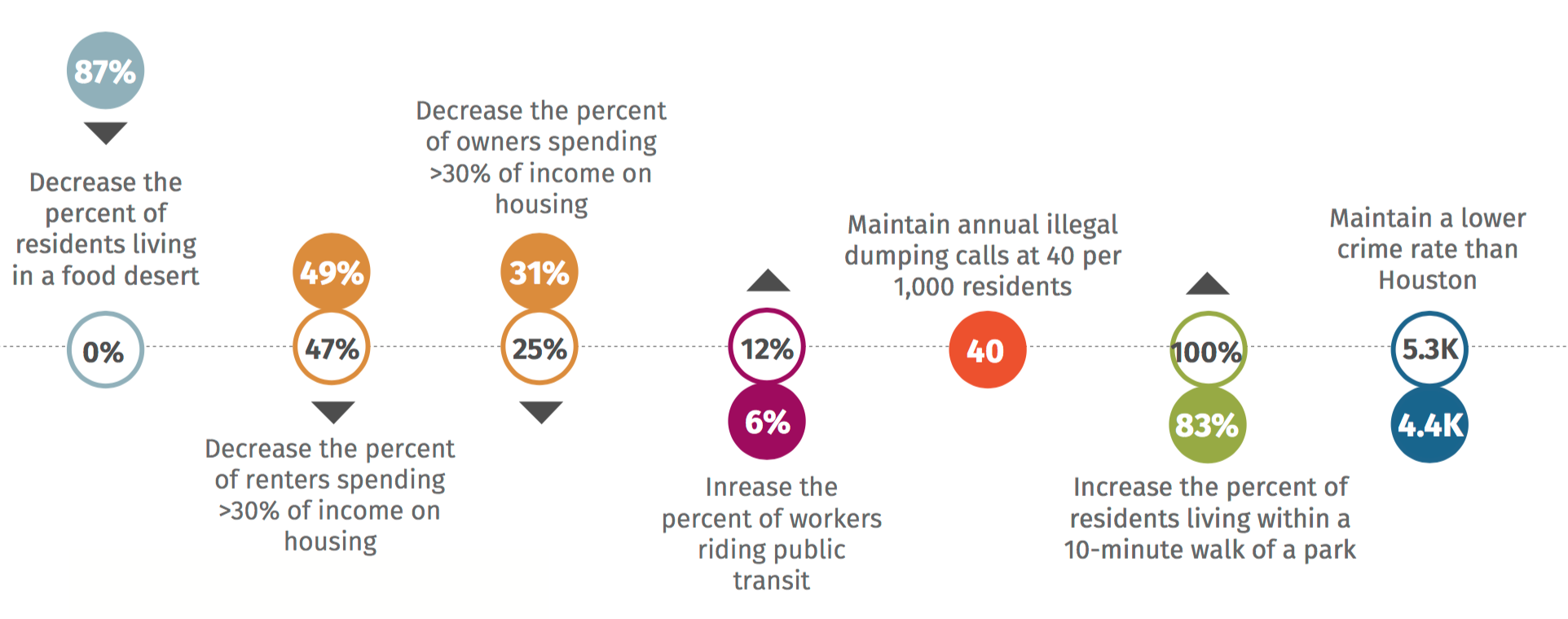
Source: City of Houston.
Housing
The goals here mirror those of the other neighborhoods: build new housing while preserving and repairing existing housing. "As new high-end housing units are built," notes the report, "the gap between the number of affordable homes and the number of low- and moderate-income residents has widened." The neighborhood recently welcomed a mixed-use, single room occupancy affordable apartment complex but the plan underscores the need for more. In addition to repair programs and new affordable construction, particularly along the rail, the plan calls for the establishment of a Community Land Trust.
Some of the detailed goals: Build 100 new affordable units by 2023. Provide home repair assistance to 50 senior citizens by 2023.
Neighborhood character
In a neighborhood as old as Second Ward, there's a lot of history to protect. And the plan calls for increasing those protections through new landmark statuses and historic district designations. It also includes goals around public art, gallery space and museum engagement.
The specific goals: Preserve and reuse two historic buildings within the next five years. Decrease illegal dumping calls by 25 percent by 2023. Complete 10 public art projects by 2023.
Infrastructure
The neighborhood already has a higher than citywide percent of residents who ride transit to work, but more could be done to improve mobility. The plan calls for streetscape improvements for several streets, including Harrisburg, Canal and Lockwood. The report also identified several areas for sidewalk and crosswalk improvements. Finally better transit facilities, with benches, lights and other amenities, could help encourage more ridership and improve the experience for users.
Among the more-detailed goals: Reduce crashes by 25 percent by 2023 and end both pedestrian and rail crashes. Build or repair 10 miles of sidewalks, plus 10 new miles of bike lanes by 2023. Add five new bus shelters by 2023.
THIRD WARD
The second of two neighborhoods within the Complete Communities program where the mayor said the city would take a secondary, supportive role, Third Ward is one of the city's historically African American neighborhoods organizing to manage the neighborhood change currently underway. Here affordable housing, jobs and economic opportunities as well as education were identified as the highest priority areas in the plan.
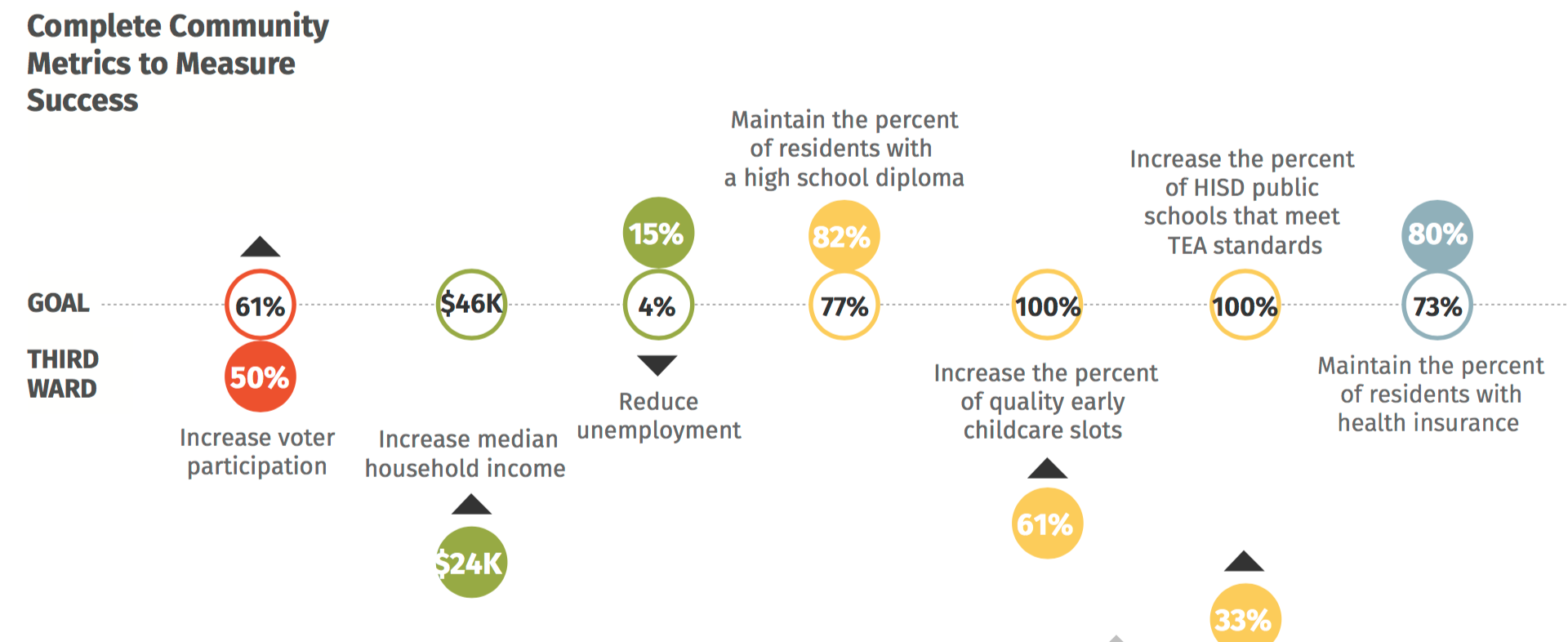
Source: City of Houston.
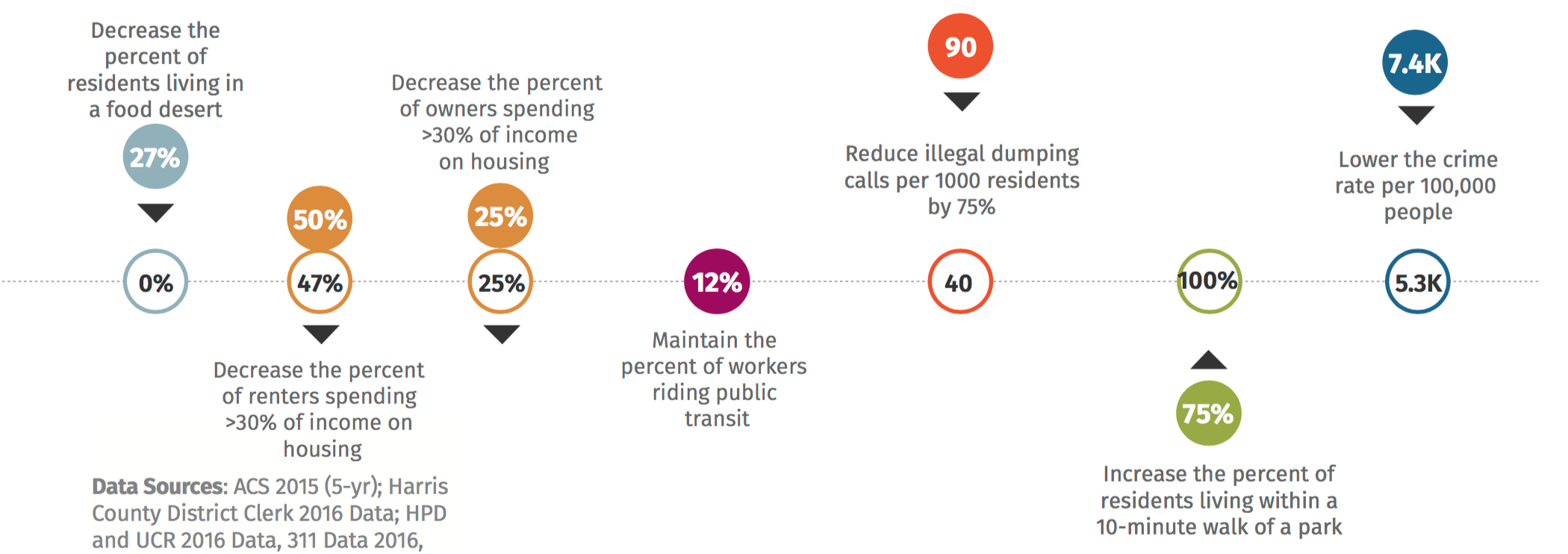
Source: City of Houston.
Housing
Already the site of an effort to launch a Community Land Trust, Third Ward is gentrifying. "Development pressure is accelerating the loss of affordable housing," the plan notes, "as many older homes are demolished and replaced by new, high-end, single- family homes and townhomes." As such, affordable housing is one of the most critical needs in the neighborhood.
The detailed goals: Have a net loss of the number of affordable units through 2023. Provide legal or financial assistance to 70 renters facing eviction each year. Preserve at least 80 percent of the homes built before 1940. Create an affordable housing advocacy team.
Economic opportunity
With an unemployment rate well above the city's, Third Ward also has a lack of business and retail options within the neighborhood, with many residents traveling outside the area to shop. Economic development could theoretically address both concerns. With two universities and proximity to two of the area's largest job centers, the report notes, Third Ward still has starkly fewer economic opportunities than other Houston neighborhoods. Some changes are already in the works, like the creation of a Workforce Solutions site and a new Financial Opportunity Center. But the plan details more to be done.
Some of the more specific aims of the plan: 10 new locally-owned businesses by 2023 with 300 small business loans annually by that same year and an increase in overall small business loans from $2.35 million in 2015 to $5 million. Halving the unemployment rate by 2023 to 7.5 percent.
Education
In addition to strengthening local schools, the report also focused on early education opportunities and high quality childcare. Two of the area's four public schools did not meet state standards and one is currently at risk of being closed and reopened with more limited grades, according to the plan. The Mayor's Office of Education has held meetings here and released recommendations but that requires buy-in from the school district, currently confronting budget cuts, a rash of improvement required schools and a recently departed superintendent.
The specific goals here: All public schools will meet and exceed state standards by 2023. Increase the number of students served at the Smith Neighborhood Library by 25 percent. Have four state or nationally-certified childcare centers by 2023.

